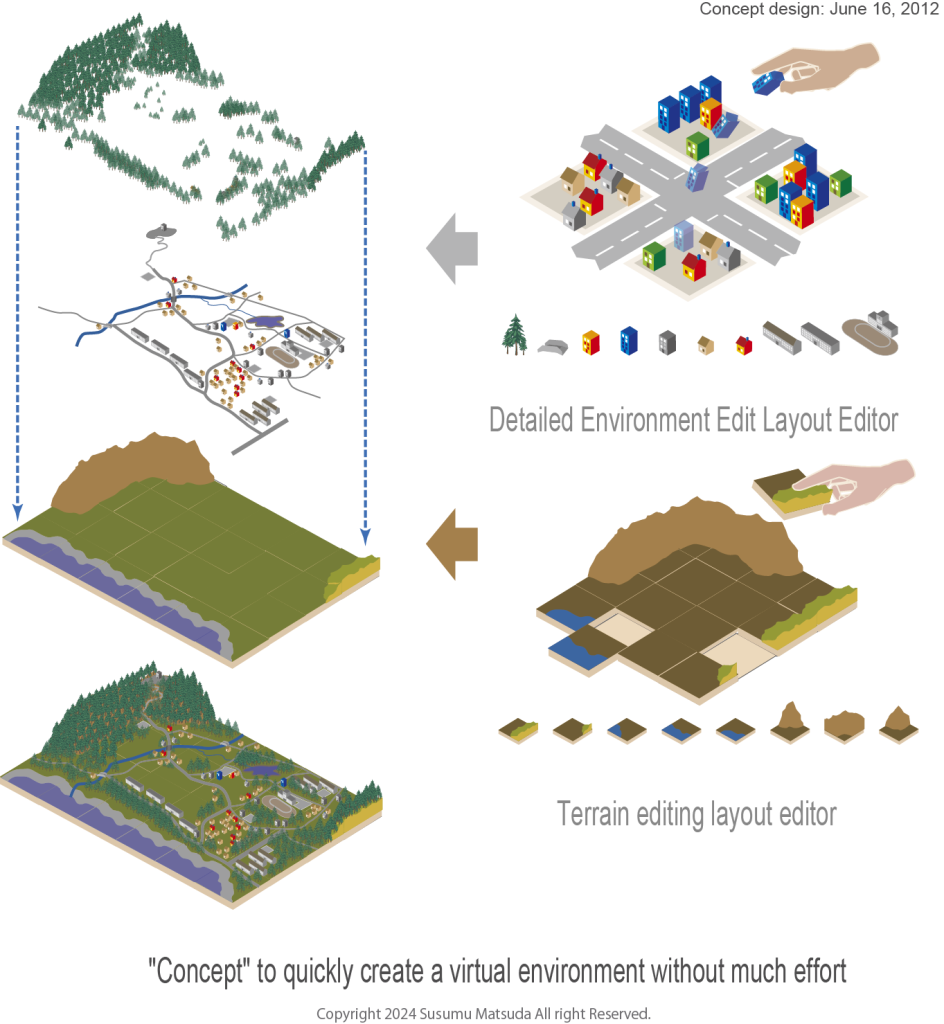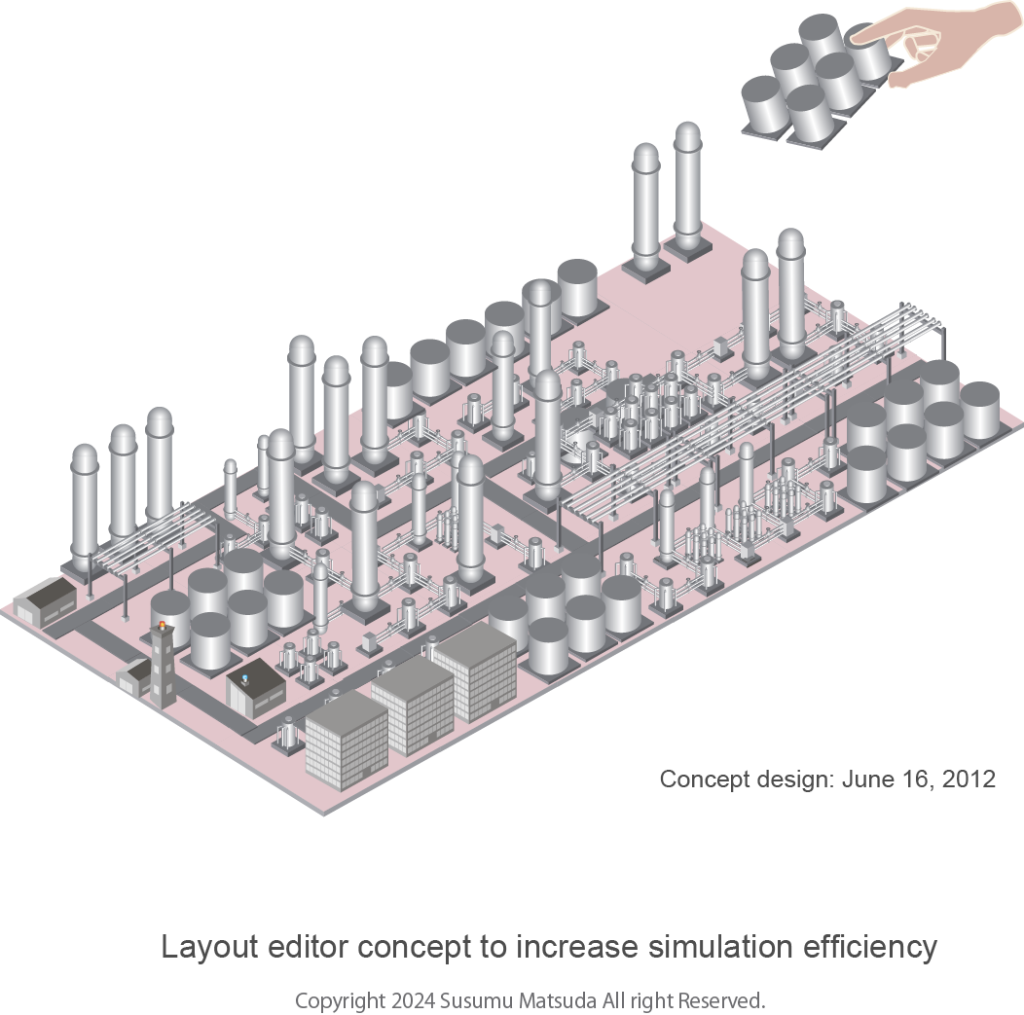Easy to use VR, at first need to prepare an environment using 3D modeling. 3D modeling is generally created using three methods. The first method is to convert 3D-CAD data (convert solid data to surface model) and use it. The second method is to measure the real space with a 3D laser scanner and create a 3D model (irradiate a laser and plot colored points at the reflected coordinates: 3D point cloud data). The third method is to create a 3D model for VR using a CG modeling tool. In any case, to use VR efficiently, you need a way to edit the created 3D model efficiently and quickly to create the desired virtual space. Because VR requires time to create a virtual space, software development costs tend to be high. In 2012, we thought of a method to reduce this cost and create a high-quality enabling environment in a short time and created a tool.

A good way to efficiently create virtual environments is to reuse 3D models. Edit the layout of multiple 3D models and create a block structure for reuse. Create an even wider virtual space by combining the created blocks. For terrain, a basic module is prepared in advance and a terrain environment model is created using the basic module. Lay out block-structured modules on the created terrain environment model to create the desired virtual space. This method can reduce development time and costs by 1/2 to 1/5. In 2013, we developed and commercialized the RiMM layout editor that realizes this concept.
